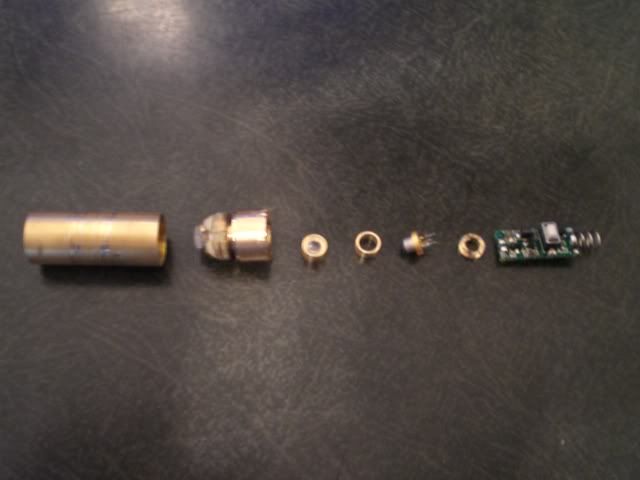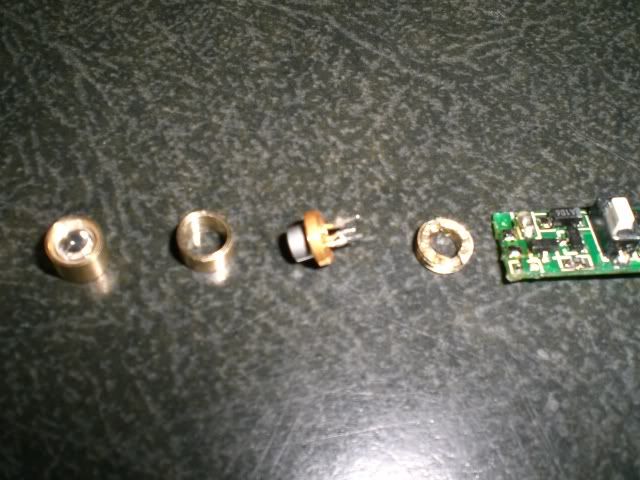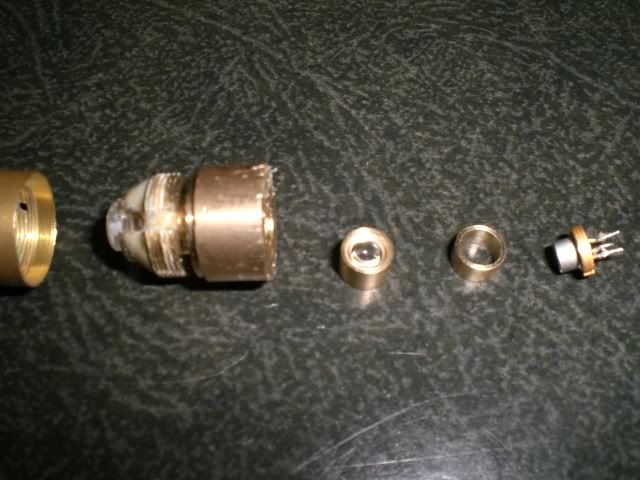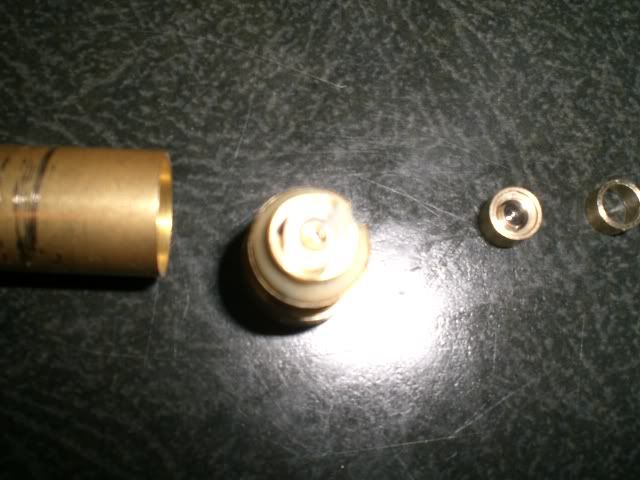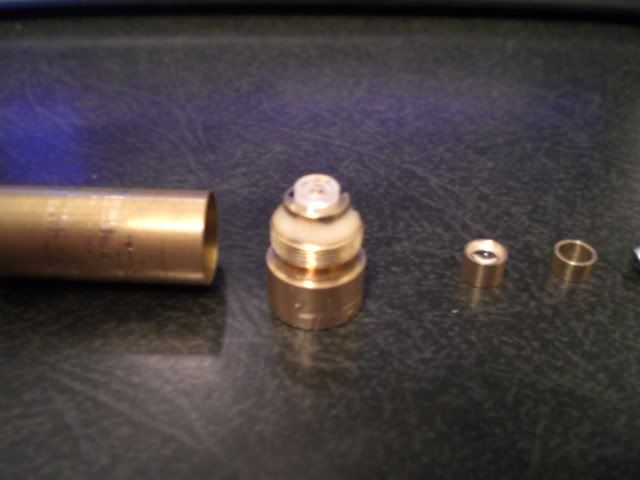WackBag
0
- Joined
- Aug 26, 2008
- Messages
- 387
- Points
- 18
Just kidding about the NSFW, but will probably get 10,000 hits  Anyway, this is the 20 mW green module I purchased from Standstone11 that did not work (she is replacing it). Before I dissected it I tested both the driver and the diode...which neither worked. Sooooo I thought I would dismantle it to see what its' design looked like. One thing that is interesting, is that the 808 nM diode is not pressed in but held in place by a small retainer ring. So if I replace the diode I could just drop it in
Anyway, this is the 20 mW green module I purchased from Standstone11 that did not work (she is replacing it). Before I dissected it I tested both the driver and the diode...which neither worked. Sooooo I thought I would dismantle it to see what its' design looked like. One thing that is interesting, is that the 808 nM diode is not pressed in but held in place by a small retainer ring. So if I replace the diode I could just drop it in  The module is laid out in the order it came apart. If there is an expert out there...please chime in and identify the parts, especially which parts are the special crystals, etc. There is still the collimation lens in the main body, you would need a spanner wench to unscrew it out. For simplification lets number the pieces 1-7 starting left to right in photo number 1. 1=main body. 5=808 nM diode. 6=retaining ring. 7=driver. I'm not sure what 2-4 are called? P.S. No animals were harmed in the making of this thread ;D
The module is laid out in the order it came apart. If there is an expert out there...please chime in and identify the parts, especially which parts are the special crystals, etc. There is still the collimation lens in the main body, you would need a spanner wench to unscrew it out. For simplification lets number the pieces 1-7 starting left to right in photo number 1. 1=main body. 5=808 nM diode. 6=retaining ring. 7=driver. I'm not sure what 2-4 are called? P.S. No animals were harmed in the making of this thread ;D
